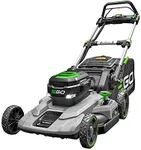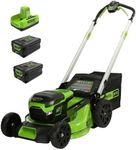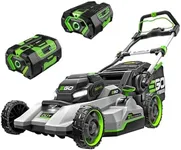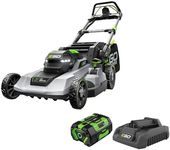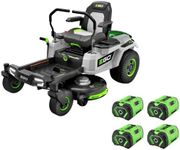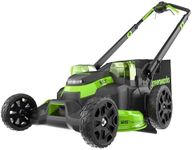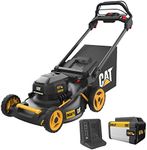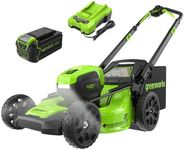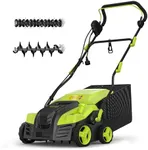Buying Guide for the Best Self Propelled Lawn Mowers
Choosing the right self-propelled lawn mower can make maintaining your lawn much easier and more efficient. Self-propelled mowers use a transmission to drive the wheels, which means you don't have to push the mower, making it ideal for larger lawns or hilly terrain. When selecting a self-propelled lawn mower, consider the size and type of your lawn, your physical capabilities, and the features that will make mowing easier and more enjoyable for you.Engine PowerEngine power, measured in horsepower (HP) or cubic centimeters (cc), determines how efficiently the mower can cut through grass. More powerful engines can handle thicker, taller grass and uneven terrain better. For small to medium-sized lawns with regular grass, an engine with lower power (around 140-160cc) is usually sufficient. For larger lawns or tougher grass, consider a more powerful engine (above 160cc). Choose based on the size of your lawn and the type of grass you have.
Cutting WidthThe cutting width refers to the width of the mower's blade and determines how much grass is cut in a single pass. A wider cutting width (20-22 inches) can reduce the number of passes needed, making it ideal for larger lawns. However, a narrower cutting width (16-18 inches) can be more maneuverable and better suited for smaller lawns or areas with many obstacles. Select a cutting width that matches the size and layout of your lawn.
Drive TypeSelf-propelled mowers come in front-wheel drive (FWD), rear-wheel drive (RWD), and all-wheel drive (AWD) options. FWD mowers are easier to maneuver and work well on flat terrain. RWD mowers provide better traction on hills and uneven ground. AWD mowers offer the best traction and are suitable for very hilly or rough terrain. Choose the drive type based on the terrain of your lawn.
Speed ControlSpeed control allows you to adjust the mower's pace to match your walking speed and the mowing conditions. Some mowers have a single-speed setting, while others offer variable speed control. Variable speed control provides more flexibility and comfort, especially if you have a large or complex lawn. Consider your comfort and the complexity of your lawn when choosing the speed control feature.
Cutting Height AdjustmentCutting height adjustment allows you to change the height at which the grass is cut. This is important for maintaining a healthy lawn, as different grass types and seasons require different cutting heights. Look for mowers with easy-to-use height adjustment mechanisms and a range of height settings. Choose a mower that offers the flexibility to adjust the cutting height to suit your lawn's needs.
Grass Clipping ManagementGrass clipping management refers to how the mower handles the grass clippings. Options include bagging, mulching, and side discharge. Bagging collects clippings for disposal, mulching finely chops clippings and returns them to the lawn as fertilizer, and side discharge ejects clippings to the side. Consider how you want to manage clippings and choose a mower that offers the desired option or multiple options for versatility.
Ease of UseEase of use encompasses features like handle comfort, ease of starting, and overall maneuverability. Look for mowers with ergonomic handles, easy-start engines, and features that make the mower easier to push and turn. Consider your physical capabilities and how much effort you want to put into mowing when evaluating ease of use.
Durability and Build QualityDurability and build quality determine how long the mower will last and how well it will withstand regular use. Look for mowers made with high-quality materials, such as steel decks and sturdy wheels. Consider the warranty offered by the manufacturer as an indicator of durability. Choose a mower that is built to last, especially if you have a large lawn or plan to use it frequently.
